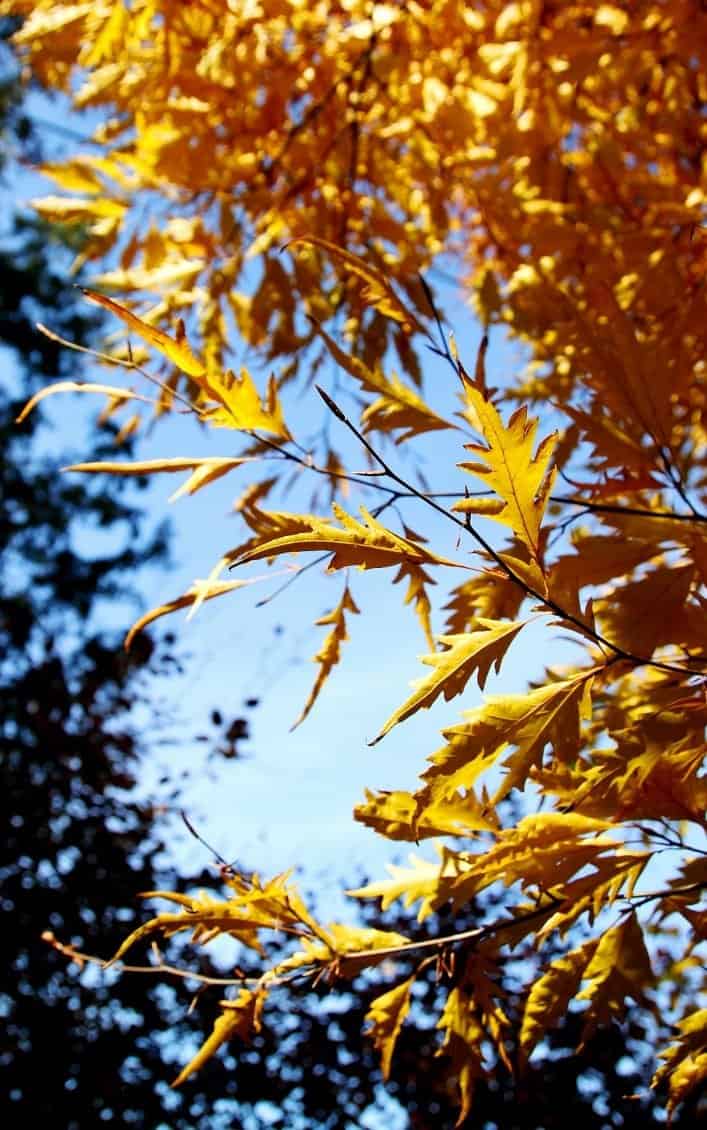
I collect trees, and that’s not a closet hobby, like collecting snuff boxes or tea cups. With trees, you’ve really got to have a place to put them, and still, it will be crowded. In the front garden, there is a river birch, four red River’s beech, a fern-leaved beech, a limber pine, a weeping crabapple, a magnolia (still young), two lilacs and a Japanese maple. You see what I mean? Eventually push comes to shove and some adjustments need to be made.
Now that the leaves are down, I can see the full scope of the situation. It’s important to see the wood without all those distracting leaves. I can see just where the fern-leaved beech has met the river birch and formed a canopy, and that in turn has caused the grass lawn to thin out and allow an invasion of my nemesis, the creeping buttercup (Ranunculus repens). Something must be done.
Of all these trees, the fern-leaved beech (Fagus sylvatica var. heterophylla ‘Aspleniifolia’, Zone 5) is my favourite and the one that will require the most pruning this week. It’s a tree of true elegance, with narrow glossy green leaves that turn burnished bronze in autumn and form the most ideal leaf mulch. In winter the grey bark is similar to the hide of an elephant, and the glossy chestnut brown buds are delicately pointed.
Pruning the fern-leaved beech is a cause for high nerves. I’ve been trying for years to train a hummingbird to visit a feeder, and this summer she finally found it in this beech. Hummingbirds are very specific about location and will return to exactly the same spot each year. So I’ve got the feeder out and in the tree, to be sure it’s location won’t change while pruning. She’s due back May 15, and I’ve got to be ready!


Leave a Reply to Ann Boyd Cancel reply